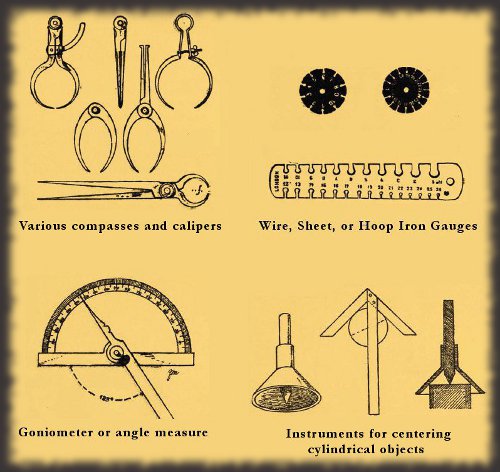
The tools and appliances used to determine the different measurements of various wrought iron objects fabricated by blacksmiths, vary greatly according to the work to be executed. There are instruments used for measuring and designing wrought iron pieces, others that are made to support and hold objects securely, (as well as the various kinds of tools used in forging and welding), and also devices for cutting and dividing; (i.e. drills, borers, punches, and screwing-tools.Measures used for determining length, are similar to those employed for general use; for example, wooden or metal rods or rules, folding or tape measures.
This article is an edited version of the original text from "A Handbook of Art Smithing"
Click Here to Download the entire eBook version of “A Handbook of Art Smithing”